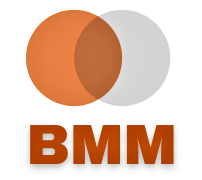Unlocking The Secrets Of Profitable Blogging
Welcome to the world of profitable blogging, where creativity, passion, and dedication come together to create a platform that can make your dreams a reality. Whether you’re looking to share your expertise, build a personal brand, or generate income, blogging offers an exciting opportunity to connect with a global audience. But first things first, let’s dive into the initial steps of setting up your blog and unlocking the secrets of profitable blogging to skyrocket your earnings.
Remember, building a profitable blog takes time, effort, and consistency. Stay focused on providing value to your readers, interacting with your audience, and refining your content. With dedication and perseverance, your blog can become a thriving platform for sharing your passion, connecting with others, and achieving your blogging goals. So, let’s unlock the secrets of profitable blogging together!
Setting Up a Blog
Setting up a blog is an exciting and straightforward process. Here are the essential steps to get you started on your blogging journey:
1. Choose a Blogging Platform: Selecting a suitable blogging platform is the first step. Popular options include WordPress.org, Blogger, and Squarespace. WordPress.org is highly recommended due to its flexibility, customization options, and extensive plugin availability. It requires web hosting and a domain name.
2. Secure a Domain Name: A domain name is the web address of your blog (e.g., www.yourblogname.com). Choose a domain name that reflects your blog’s topic or brand and is memorable. Many domain registration services allow you to search for available domain names and purchase them for a yearly fee.
3. Set Up Web Hosting: Web hosting is like renting space on the internet to store your blog’s files and make them accessible to visitors. Choose a reliable web hosting provider that offers good server performance, security features, and customer support. Install WordPress on your hosting account following the provider’s instructions.
4. Design and Customize Your Blog: Select a WordPress theme that suits your blog’s niche and desired aesthetic. Customize the theme by adding your logo, choosing colours, and configuring the layout. WordPress offers a user-friendly interface to make these modifications. Ensure your blog has a clean, intuitive, and mobile-responsive design for a great user experience.
5. Install Essential Plugins: Enhance the functionality of your blog by installing essential plugins. Some recommended plugins include:
- Yoast SEO: Helps optimize your blog for search engines.
- Akismet: Protects your blog from spam comments.
- Jetpack: Provides security, site performance, and traffic analysis features.
- Contact Form 7: Allows visitors to contact you easily.
- Create Important Pages: Set up key pages for your blog, including an About Me/Us page to introduce yourself or your brand, a Contact page with A contact form or email address for inquiries, and
- A Privacy Policy page to inform visitors about data collection and usage on your blog.
6. Plan Your Content Strategy: Develop a content strategy by identifying your target audience and planning the type of content you want to publish. Create an editorial calendar to organize your content ideas, ensuring a consistent flow of blog posts. Research keywords related to your niche for search engine optimization purposes.
7. Start Writing and Publishing: Begin creating compelling and valuable blog posts based on your content strategy. Craft engaging headlines and write in a conversational style to captivate your readers. Incorporate relevant keywords naturally within your content. Aim for well-structured articles with clear headings, subheadings, and paragraphs to enhance readability.
8. Promote Your Blog: Share your blog posts on social media platforms, engage with your audience, and encourage readers to subscribe to your blog. Network with other bloggers in your niche, participate in relevant online communities and consider guest blogging to expand your reach.
Monitor and Analyze: Utilize tools like Google Analytics to track your blog’s performance. Monitor your traffic, user behaviour, and engagement metrics. Adjust your content strategy based on the insights gathered to optimize your blog’s growth.
Remember, building a successful blog takes time, effort, and consistency. Focus on providing value to your readers, interacting with your audience, and continuously improving your content to unlock the secret to profitable blogging. With dedication and perseverance, your blog can thrive and become a platform for sharing your passion, connecting with others, and achieving your blogging goals.

Creating Quality Content
Creating high-quality content is crucial for the success of your blog. Quality content engages your audience, establishes your authority, and keeps readers coming back for more. Here are some key tips for creating compelling and valuable content:
- Understand Your Audience: Before creating content, it’s essential to understand your target audience. Research their demographics, interests, pain points, and the type of content they prefer. This understanding will help you tailor your content to their needs and provide them with the information they’re seeking.
- Focus on Valuable Information: Your content should provide value to your readers. Aim to educate, inform, entertain, or inspire them. Offer unique insights, practical tips, in-depth analysis, or compelling stories. Make sure your content is relevant, well-researched, and offers a fresh perspective on the topic.
- Craft Engaging Headlines: A compelling headline grabs attention and entices readers to click and read your content. Use attention-grabbing words, create curiosity, and promise a benefit. Experiment with different headline styles to find what works best for your audience.
- Organize Your Content: Structure your content in a way that is easy to follow. Use clear headings, subheadings, and bullet points to break up the text and improve readability. This allows readers to scan the content and find the information they need. Incorporate relevant images, infographics, or videos to enhance visual appeal and engagement.
- Write in a Conversational Tone: Use a conversational and friendly tone in your writing. Write as if you’re having a conversation with your readers. Avoid overly complex language or jargon that may alienate or confuse your audience. Make your content approachable and relatable.
- Incorporate Storytelling: Stories have a powerful impact on readers. Weave storytelling elements into your content to make it more engaging and memorable. Use personal anecdotes, case studies, or real-life examples to illustrate your points and connect with your audience on an emotional level.
- Provide Actionable Takeaways: Your content should provide actionable takeaways that readers can implement in their lives or businesses. Offer step-by-step instructions, practical tips, or downloadable resources. By providing actionable advice, you demonstrate your expertise and give readers a reason to return to your blog.
- Include Visuals and Multimedia: Visual content like images, videos, or infographics can enhance the reader’s experience and make your content more shareable. Use visuals that are relevant, high-quality, and visually appealing. They can help break up the text and communicate information more effectively.
- Edit and Proofread: Before publishing your content, thoroughly edit and proofread it. Check for spelling and grammar errors, ensure clarity, and polish your writing. Use editing tools or ask someone else to review your content for a fresh perspective.
- Encourage Engagement: Encourage readers to engage with your content. Pose questions, ask for their opinions or experiences, and invite them to leave comments or share their thoughts. Respond to comments and engage in conversations with your audience to build a sense of community.

Understanding Your Audience
Understanding your audience is a fundamental aspect of successful blogging. By gaining insights into your target audience, you can create content that resonates with them, address their needs, and build a loyal following. Here are key steps to better understand your audience:
- Define Your Target Audience: Start by clearly defining your target audience. Consider their demographics such as age, gender, location, occupation, and interests. Develop buyer personas or ideal reader profiles that represent your audience segments. This helps you tailor your content to their specific preferences and needs.
- Conduct Audience Research: Conduct thorough research to delve deeper into your audience’s characteristics, motivations, and pain points. Use online surveys, interviews, or social media polls to gather insights. Analyze data from website analytics, social media analytics, and email subscriber lists to understand audience behaviour and preferences.
- Listen and Engage: Actively listen to your audience by monitoring comments, social media conversations, and email inquiries. Pay attention to their questions, feedback, and concerns. Engage with your audience through social media, blog comments, or email newsletters to foster two-way communication and build relationships.
- Use Analytics Tools: Utilize analytics tools like Google Analytics, social media analytics, and email marketing analytics to gather data on audience behaviour. Analyze metrics such as page views, bounce rate, time spent on a page, social media engagement, and email open rates. This data provides insights into popular content, audience preferences, and areas for improvement.
- Research Keywords and Search Intent: Keyword research helps you understand what your audience is searching for and the language they use. Identify relevant keywords related to your niche and analyze search intent. Determine the questions, problems, or information your audience seeks and align your content to meet those needs.
- Monitor Social Media: Social media platforms provide valuable information about your audience’s interests, discussions, and preferences. Monitor relevant hashtags, participate in industry-related groups, and observe discussions to understand trending topics, pain points, and popular content formats.
- Engage in Market Research: Keep abreast of industry trends, market reports, and competitor analysis. Stay informed about new developments, emerging topics, and evolving audience demands. Identify gaps or underserved areas in the market where you can provide unique value.
- Seek Feedback: Actively seek feedback from your audience through surveys, polls, or direct communication. Ask for their opinions on content topics, formats, and overall user experience. Incorporate their feedback to improve your blog and make it more aligned with their preferences.
- Analyze Competitors: Study your competitors who target a similar audience. Analyze their content, engagement strategies, and audience interactions. Identify what works well for them and adapt those successful tactics to your blog while adding your unique value proposition.
- Iterate and Adapt: Understanding your audience is an ongoing process. Continuously monitor and analyze audience data and feedback. Adapt your content strategy based on evolving trends and changing audience needs. Experiment with new content formats, topics, or engagement methods to keep your audience engaged.

Secrets Of Profitable Blogging: Writing Engaging Blog Posts
Creating engaging blog posts is essential for capturing and retaining your audience’s attention. Engaging content keeps readers hooked, encourages them to interact with your blog, and increases the likelihood of them returning for more. Here are key strategies to write captivating and engaging blog posts:
- Start with a Compelling Hook: Grab your readers’ attention right from the beginning with a strong and compelling hook. This can be an intriguing question, a fascinating statistic, a relatable anecdote, or a thought-provoking statement. The hook should immediately captivate your audience and entice them to continue reading.
- Know Your Audience: Understand your audience’s interests, preferences, and pain points. Tailor your content to address their needs and offer solutions. Use a tone and writing style that resonates with them. By speaking directly to their concerns, desires, and aspirations, you establish a connection that keeps them engaged.
- Create Well-Structured Content: Organize your blog post logically and coherently. Use clear headings, subheadings, and bullet points to break up the text and make it scannable. Incorporate short paragraphs and white space to improve readability. A well-structured post helps readers navigate through your content easily and find the information they seek.
- Tell Stories and Use Examples: Engage your readers by incorporating storytelling techniques. Weave personal anecdotes, case studies, or real-life examples into your content. Stories evoke emotions, create relatability, and make your content more memorable. Use vivid descriptions and storytelling elements to draw readers into your narrative.
- Use Engaging Language: Write in a conversational and friendly tone that feels approachable. Use simple and clear language that your audience can easily understand. Avoid jargon or technical terms unless necessary, and explain them when you do use them. Use active voice, personal pronouns, and contractions to create a conversational style that resonates with readers.
- Add Visuals and Multimedia: Incorporate visuals such as images, infographics, or videos to enhance the visual appeal of your blog posts. Visual content not only breaks up the text but also helps convey information more effectively. Use relevant and high-quality visuals that support your content and engage readers visually.
- Include Call-to-Actions (CTAs): Encourage reader engagement by including clear and relevant call-to-actions throughout your blog posts. CTAs can be prompts to leave comments, share the post on social media, subscribe to your newsletter, or explore related content. Make it easy for readers to take the desired action and engage with your blog.
- Make it Interactive: Engage your readers by involving them in your content. Pose questions, encourage them to share their opinions or experiences in the comments section, or conduct polls or surveys. Respond to comments promptly and create a sense of community on your blog.
- Provide Actionable Tips and Takeaways: Offer practical and actionable advice that readers can implement in their lives. Provide step-by-step instructions, tips, or strategies that they can apply immediately. When readers see the value in your content and can apply it to their situations, they are more likely to stay engaged and return for more.
- End with a Call-to-Action: Wrap up your blog post with a clear call-to-action that encourages readers to take the next step. It can be asking them to leave comments, share their thoughts, explore related posts, subscribe to your newsletter, or follow you on social media. This helps deepen the connection with your audience and extends their engagement beyond the current post.
By implementing these strategies, you can write blog posts that captivate your readers and encourage them to interact with your content. Remember to continually analyze your audience’s response.
Related articles:
Blogging For Beginners Are You Thinking Of Starting A Blog
How To Make Money Through Blogging
Monetization Methods
Once you have established a successful blog, there are several ways to monetize your content and generate income. Here are five popular monetization methods for bloggers:
1. Display Advertising: Display advertising involves placing advertisements on your blog. You can join advertising networks such as Google AdSense or Media.net, which provide ad codes to insert into your website. These networks display relevant ads based on your content and audience. When visitors click on the ads or when they are viewed, you earn revenue. Optimize ad placement and experiment with different ad formats to maximize earnings.
2. Affiliate Marketing: Affiliate marketing is a performance-based marketing strategy where you promote products or services and earn a commission for each sale or action generated through your referral. Join affiliate programs relevant to your niche and promote products through dedicated affiliate links or banners in your blog posts. Write honest and informative reviews, create tutorials, or recommend products that you genuinely believe in to build trust with your audience.
3. Sponsored Posts and Partnerships: Sponsored posts involve collaborating with brands or companies that pay you to write content featuring their products or services. This can include product reviews, sponsored articles, or social media promotions. Ensure that sponsored content aligns with your blog’s niche and is valuable to your audience. Be transparent about the sponsored nature of the post to maintain credibility.
4. Digital Product Creation: Create and sell digital products such as e-books, online courses, templates, or exclusive content. Leverage your expertise and provide valuable resources that your audience is willing to pay for. Develop comprehensive and high-quality products that solve specific problems or cater to your audience’s needs. Market your digital products through your blog, email newsletters, social media, or partnerships with other bloggers.
5. Offering Services: Utilize your blog as a platform to showcase your skills and expertise and offer services related to your niche. This can include consulting, coaching, freelance writing, graphic design, web development, or any other service that aligns with your blog’s focus. Highlight your expertise, provide testimonials, and clearly outline the services you offer. Create a contact page or inquiry form to make it easy for potential clients to reach you.
It’s important to note that monetization methods should be implemented strategically and in a way that does not compromise the quality or integrity of your content. Focus on providing value to your audience and maintaining their trust. Experiment with different monetization methods to find what works best for your blog and audience. Remember, building a sustainable income from your blog takes time and consistent effort.
Promoting Your Blog
Promoting your blog is crucial to reach a wider audience, increase traffic, and building a loyal reader base. Here are four effective strategies to promote your blog:
1. Social Media Promotion: Leverage the power of social media platforms to promote your blog and engage with your audience. Create profiles on popular platforms such as Facebook, Twitter, Instagram, LinkedIn, or Pinterest, depending on your blog’s niche and target audience. Share your blog posts, engage in conversations, and interact with your followers.
Use eye-catching visuals, compelling captions, and relevant hashtags to attract attention. Encourage social sharing by including social sharing buttons on your blog posts. Actively participate in relevant online communities and groups to expand your reach.
2. Search Engine Optimization (SEO): Optimize your blog for search engines to increase its visibility in search results. Conduct keyword research to identify relevant keywords and incorporate them naturally into your blog posts, headings, meta tags, and URLs. Create high-quality, informative, and well-structured content that addresses the needs of your audience.
Improve the loading speed of your website, optimize images, and ensure mobile responsiveness. Build quality backlinks from reputable websites to boost your search engine rankings.
3. Guest Posting: Collaborate with other bloggers or websites in your niche to publish guest posts. Guest posting allows you to tap into a new audience and build credibility by sharing your expertise. Identify authoritative blogs or websites that accept guest contributions and pitch them with well-crafted article ideas.
Write high-quality, original content that aligns with the host site’s audience and guidelines. Include a brief bio or author box with a link back to your blog to drive traffic. Engage with the host site’s audience through comments and social media interactions.
4. Building an Email List: Create an email list to cultivate a direct connection with your audience. Offer valuable content incentives such as e-books, exclusive guides, or resource lists to encourage readers to subscribe to your newsletter. Place opt-in forms strategically on your blog to capture email addresses.
Send regular newsletters featuring your latest blog posts, exclusive content, or promotions. Personalize your emails and tailor them to the interests of your subscribers. Engage with your email list by encouraging feedback, asking questions, or offering special benefits.
Remember to track your promotional efforts and analyze the results to identify what works best for your blog. Adjust your strategies accordingly and continue to experiment with new promotional methods. Consistency, quality content, and genuine engagement are key to building a strong online presence and growing your blog’s readership.

Conclusion
In the world of blogging, exploring various niches that can generate income is an exciting endeavor. Setting up a blog involves choosing the right platform, securing a domain name, and optimizing the design with essential plugins. A well-planned content strategy is crucial, which includes understanding the target audience, conducting keyword research, and creating valuable and engaging content.
Creating high-quality content is essential for success. It should be tailored to the audience’s needs, written in a conversational tone, and include storytelling elements. Providing actionable takeaways and using visuals further enhance the reader’s experience.
Building a successful blog requires dedication, perseverance, and adaptability. Consistently delivering valuable content and engaging with the audience are essential for long-term success.
In the ever-changing digital landscape, staying informed about industry trends and experimenting with new approaches are crucial for continuous growth.
Blogging offers exciting opportunities for monetization. By following the essential steps to set up a blog, creating high-quality content, understanding the audience, and utilizing effective promotion strategies, bloggers can thrive in their chosen niches and turn their passion into a lucrative venture.
Frequently Asked Questions & Answers
What is the most profitable niche in blogging?
The most profitable niche in blogging can vary depending on factors like market demand, audience engagement, and competition. However, some consistently profitable niches include personal finance, health and wellness, lifestyle, technology, and business and entrepreneurship. These niches often have a broad audience base and attract advertisers and affiliate marketers, making them lucrative options for bloggers.
How do I find a profitable blog niche?
To find a profitable blog niche, consider your interests, expertise, and passion. Look for niches that have a sizable audience and demonstrate consistent demand. Conduct market research and keyword analysis to identify topics with high search volume and relatively low competition. Additionally, explore trends and emerging areas of interest in your chosen niche to position your blog for future growth.
What kind of blogs are profitable?
Blogs that are profitable typically focus on niches with a substantial and engaged audience. Some examples of profitable blog categories include lifestyle, personal finance, health and fitness, travel, food, technology, and DIY/crafts. Blogs that offer valuable and informative content, engage their audience, and employ effective monetization strategies tend to be the most profitable.
What is trending in 2023 niche?
As of 2023, some trending blog niches include sustainability and eco-friendly living, mental health and wellness, remote work and digital nomad lifestyle, home gardening and urban farming, AI and automation, cryptocurrency and blockchain, and conscious consumerism. Staying up-to-date with current events, social trends, and emerging technologies can help bloggers identify trending topics in their chosen niches.
Are blogs still profitable in 2023?
Yes, blogs can still be profitable in 2023 and beyond. While the blogging landscape has evolved, and competition has increased, there are ample opportunities for bloggers to generate income through various monetization methods, such as display advertising, affiliate marketing, sponsored content, digital product sales, and offering services. Building a successful and profitable blog requires dedication, high-quality content, audience engagement, and adapting to changing market trends.
How to become a millionaire by blogging?
Becoming a millionaire through blogging is achievable but requires substantial effort and time. Successful bloggers who reach millionaire status typically have large, engaged audiences, multiple revenue streams, and diversification of their income sources.
To increase the likelihood of becoming a millionaire blogger, focus on a profitable niche, consistently produce valuable content, build a strong and loyal readership, leverage various monetization methods, and continuously adapt to industry trends. Additionally, exploring partnerships, collaborations, and business ventures can contribute to significant financial success in the world of blogging.

